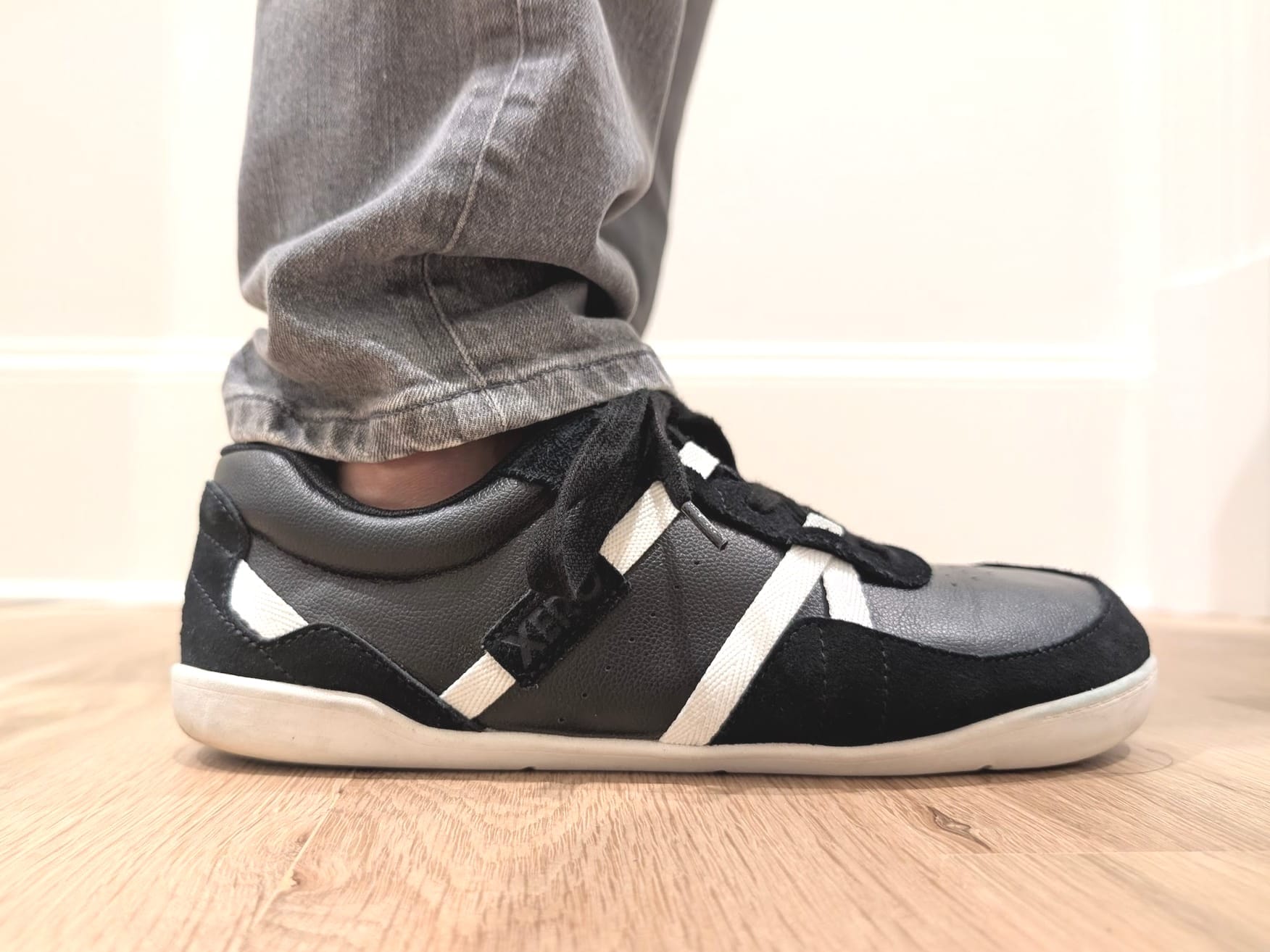Bedrock Earthquake 2.0 Sandals
The Earthquake 2.0 from Bedrock Sandals makes numerous improvements and updates on their previous 1.0 (and V2) designs, while maintaining the familiar “feather-cap” look that Bedrock Sandals are known for. Most of the improvements were aimed at…
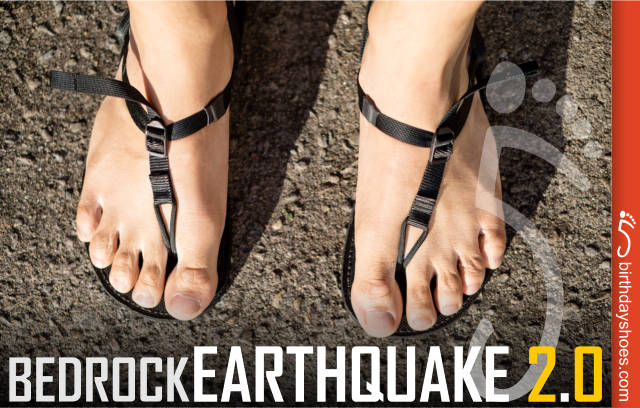
The Earthquake 2.0 from Bedrock Sandals makes numerous improvements and updates on their previous 1.0 (and V2) designs, while maintaining the familiar “feather-cap” look that Bedrock Sandals are known for.
Most of the improvements were aimed at improving the durability of what was already a well-made Sandal in the previous generation. With their 2.0 models, Bedrock has ushered in a new era of “polished-looking” running sandals for the minimalist market.
About the Bedrock Earthquake 2.0
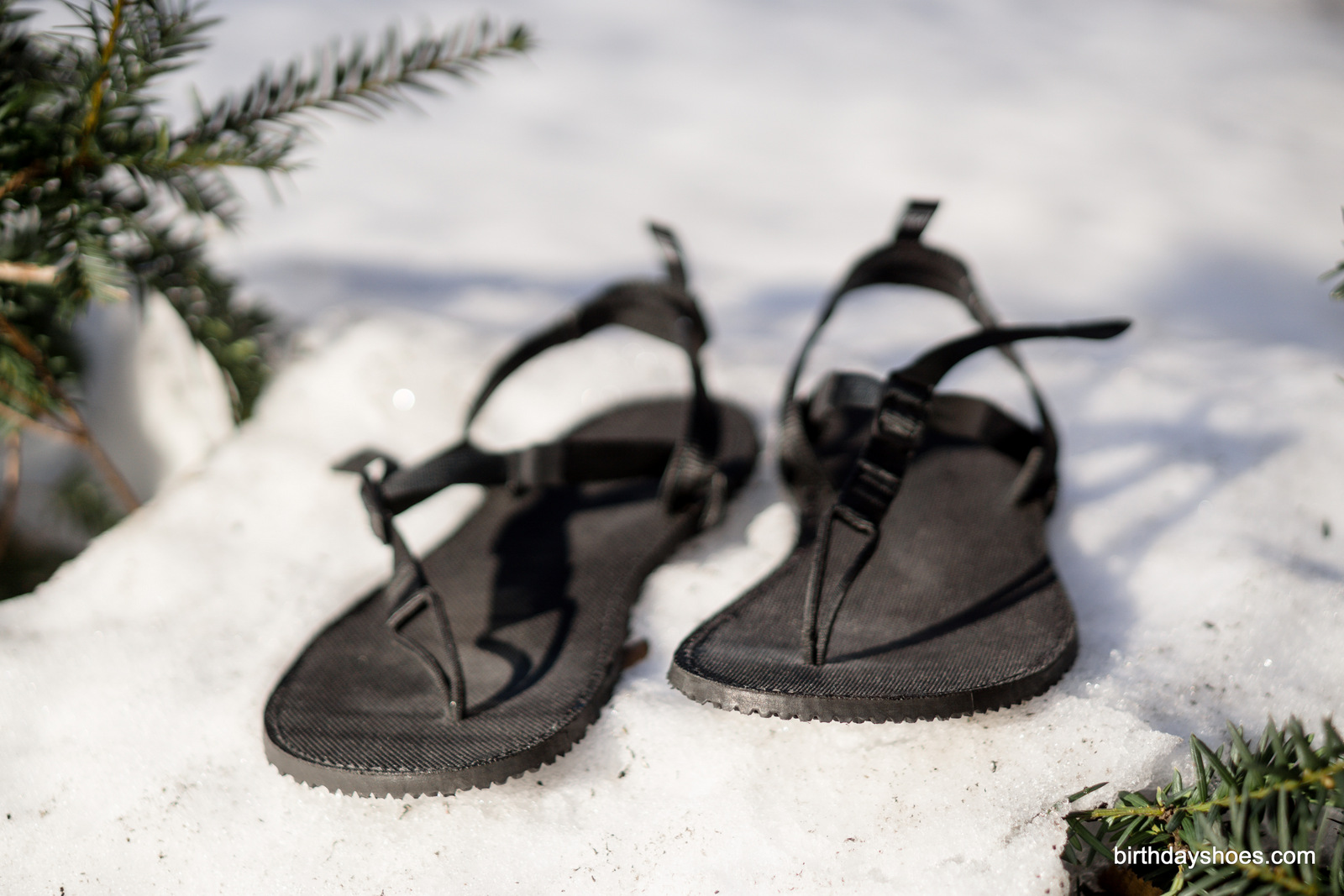
Here's what Bedrock says about the Earthquake 2.0:
The Bedrock Earthquake 2.0 is the most minimalist sandal we manufacture and uses the "original" Bedrock 6mm Vibram outsole. The Earthquake Sandal is for those who want the barest and lightest of experiences from their Bedrocks. Excellent for super minimalist running or for use as an ultra lightweight backpacking camp and river crossing sandal.
Weight— 3.9 oz (men’s size 9). Roughly the same as a KSO EVO.
Total Stack Height— 6.4mm (6mm Vibram Gumlite sole + .4mm Bedrock Ballistic Footbed)
Pros —
- Very flexible Gumlite sole
- Excellent traction for off road running and hiking
- Good slip resistance in wet settings.
- Multi-directional adjustment straps provide a great fit
Cons —
- Sole shape is best suited for narrow-to-average foot shapes; be mindful if you have wide feet.
- Ballistic Footbed may be a bit rough for new runners and those with soft feet.
- Straps take some getting used to
Barefoot Scale— With a 6mm sole, the Earthquake 2.0 is on par with other sandals on the lighter and thinner range of running sandals. Ground feel is great and the Gumlite sole is one of the most flexible options for huaraches.
Great for minimalist enthusiasts for running and all levels of hikers.
Take a look at the sandals via these photos:
Sole

Typically, the most popular Vibram options for running sandals are Gumlite, Woodstock, Morflex, and Newflex.
If you're a Vibram aficionado and pay attention to materials, the following flowchart and descriptions should be helpful in classifying the various sole materials.
The density spectrum:
[least dense] Morflex < Woodstock < Gumlite < Newflex [most dense]
Descriptions:
- Morflex “mouse pad” is a micro-cellular sole, with one-third the weight of rubber, but excellent resilience and a little bounce. The material can be equated to a very dense neoprene, slightly squishy and conforms easily to the shape of your foot. It has good grip and durability. I call it “mouse pad” because Morflex soles are typically flat slabs of foam/rubber with little-to-no texture. Excellent for road running, but not for off road use
- Woodstock “jigsaw” is a bit denser than Morflex and is typically used in thicker soles of roughly 10mm or thicker. It conforms to your foot quickly and provides slightly better traction and slip-resistance. I call it “jigsaw” because Woodstock soles have a broken-up look to them, almost like tectonic plates. They are great for new runners thanks to the thicker sole and they have better traction than Morflex soles.
- Gumlite “nubby” has the wear characteristics of rubber, but with half the weight. It has good durability and slip resistance. “Nubby” because, well, they are little nubs. Great all-around sole for road running and off road running with a good tradeoff with density, bounce, and comfort.
- Newflex “zig zag” has excellent slip resistance and durability. It has the greatest durability and grip among the soles (IMO). It is also the densest sole in the lineup, which means that it can be made thinner than other materials. Some sandal makers feature Newflex soles as thin as 3mm, though 5mm is more common. Newflex is a great all-around sole; my favorite in the bunch--Thin, strong, comfortable, and sticky when needed.
The Bedrock Earthquake 2.0 sandals use the same 6mm Vibram Gumlite sole as prior versions of Bedrock sandals in the past. Gumlite is a foam/rubber blend. The foam gives the soling material some give when pressed down upon, but not so much that it becomes squishy.
It’s a great “all-around” sole for running sandals. Good on asphalt, logs, rocks, you name it!
The sole in the Earthquake 2.0 is very flexible and can be easily rolled up in any direction. It moves with your foot and does not dictate how your foot lands when running, which is what a minimalist shoe should do—provide some protection and little else.
Of course, the sole in the Earthquake 2.0 does one better and gives you excellent traction. Many users will recognize this sole as the “Vibram nubby” sole with tons of little “points” in the bottom to help you push through dirt and debris.
These sandals can handle just about anything you throw at them. During my time with them, I ran atop logs the forests of Colorado, the beaches along the California Coast, and through ice in Boston (No, I’m not a secret agent :P). The textured bottom never failed me, even in riverbeds, dry sand, or over jagged rocks.
Because it is so lightweight, I barely noticed the Earthquake 2.0 while running. They are some of the lighter sandals on the market and I did not miss those extra ounces.
In terms of slapping, the Earthquake 2.0 is a pretty silent sandal. Some huaraches are “slappier” than others and that is mostly based upon the choice of materials and construction. With a proper running form (landing below the center of gravity, bent knees, and light forefoot or midfoot strikes) nearly all running sandals can become silent. It’s not as quiet as other sandals with a Morflex sole, but is quieter than most huaraches on the market.
Sizing
Like Shamma Sandals and Unshoes, Bedrock Sandals provides printable templates for their sandals (here was mine), so you can check the best size for your feet with just a few sheets of paper. It really helps to show the EXACT size of your footwear and I wish that more shoe companies would do this.
A note on foot shape and sizing
While the Earthquake 2.0 does feature that fantastically customizable strap system, the actual shape of the sandals may not be suitable for individuals with wide feet. The sole barely fits my duck feet when standing (As seen here), but by big and pinky toes slip off the edge of the 2.0 when splayed. Bedrocks currently offers the Earthquake in many sizes, but all of them share the same basic shape, which can be best described as an “average” foot. You can always up a size to make them a bit wider, but you can only do that to a point.
Fit and Materials
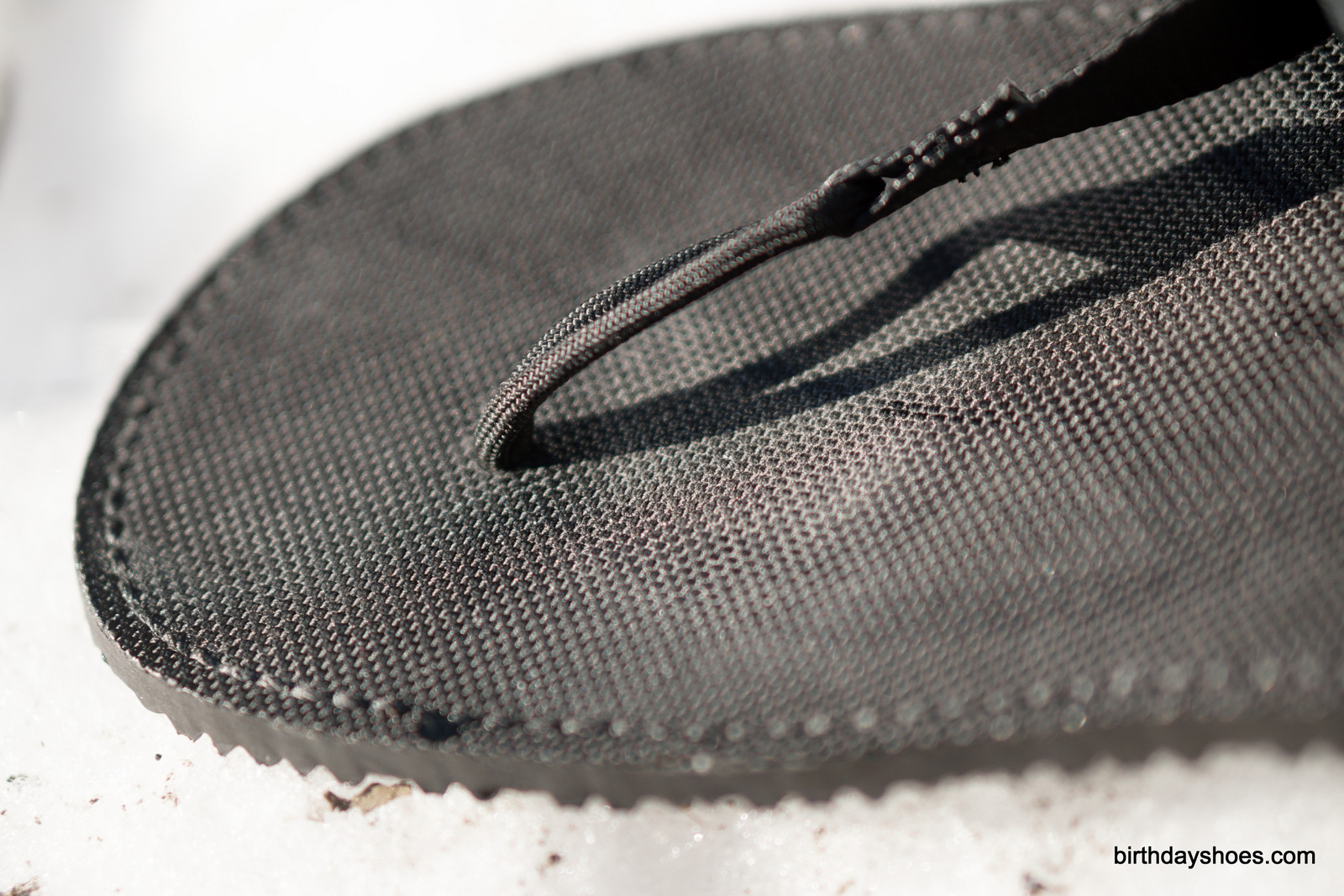
On top of the sole is the new Bedrock Ballistic footbed. This footbed is roughly .4mm thick and provides extra protection against rocks and other sharp stuff you may encounter and a little bit of texture for grip in wet and unstable terrain. It’s a synthetic weave that can be best described as a tight nylon mesh that has been stitched atop the Gumlite sole.
The texture on the footbed is a little rough; it is not sandpaper, by any means, but it is also not soft to the touch. If you are used to running in shoes, sandals with leather toppers, or just naked soles, you may find the ballistic footbed to be a little coarse, especially at the points of impact around the ball of the foot and—depending on your running technique—the heel.
While a little bit of protection is appreciated, I’ve never had any problems with rocks or sharp objects with naked Vibram soles in the past. Even relatively soft Morflex should be tough enough to take the edge off of most hiking and rock trails, especially if you are a careful and light-footed runner.
If you are eying “softer” sandals like the Amuri Cloud from Xeroshoes or any of Unshoes latest models, the footbed on the Earthquakes may not be for you.
In future versions of the Earthquake, I would like to see a softer footbed or an option to remove it entirely.
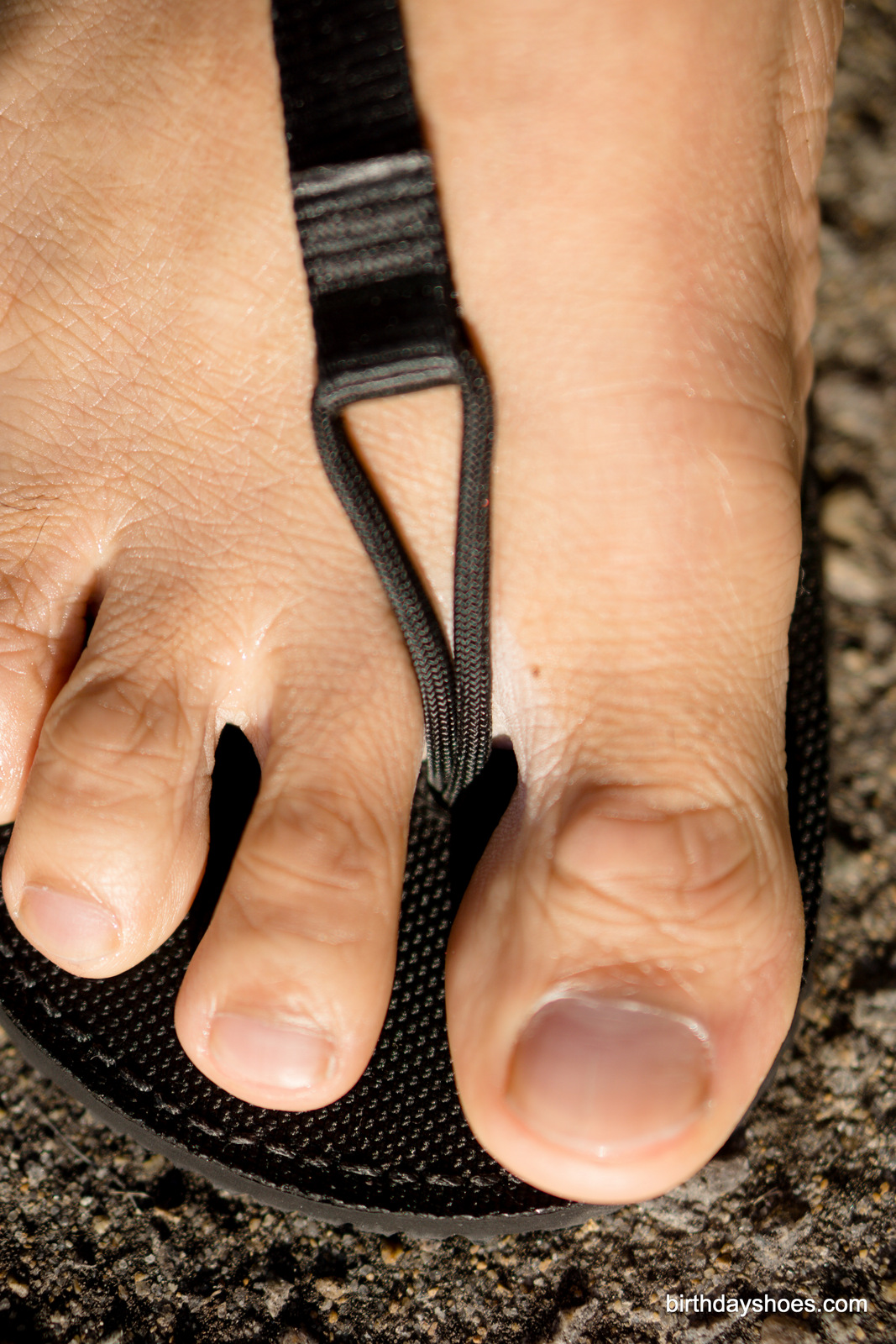
One of the best features of Bedrock Sandals it their multi-directional toggle, allows you to make very minute adjustments to the fit of the sandal. You can adjust this central toggle forward and back, and side-to-side for a very precision fit for just about any foot shape. A perfect fit will take a bit of practice, but once you get it you can put on and take off the sandal from the heel and keep everything just the way you like with few extra adjustments needed.
There are two straps that can be adjusted with this multi-directional buckle: a thicker strap--running along the outside of the foot--that adjusts the forward and backwards position and a thinner strap along the inside of the foot that adjusts the side to side position. Each strap is fed through the buckle at different points and will allow you to adjust the straps to the middle to fit higher arches, closer to the outside of the foot for flatter feet, and everywhere in between.

Both straps are relatively thin, so if you are not properly adjusted, there will be some pinching and discomfort when running. This is easily remedied through trial and error with the strap positions and it does not take too long to get things pretty comfortable for most users.
The excess strap material stands straight up and looks a bit like a feather-cap, which somewhat differentiates Bedrock Sandals from other huaraches. It’s a bit of a signature look that I can readily identify as a Bedrock shoe.
Returning for the 2.0 is Bedrocks elastic heel strap. This strap (made from recycled rubber) provides a bit of stretch to the heel portion of the sandal while you walk or run and is very comfortable, providing just the right amount of “give” as your foot digs in during uphill movement or speed work, but not so much that it slips during downhill portions and normal use. Bedrock included an additional “stopper” strap that prevents the rubber from stretching too far.
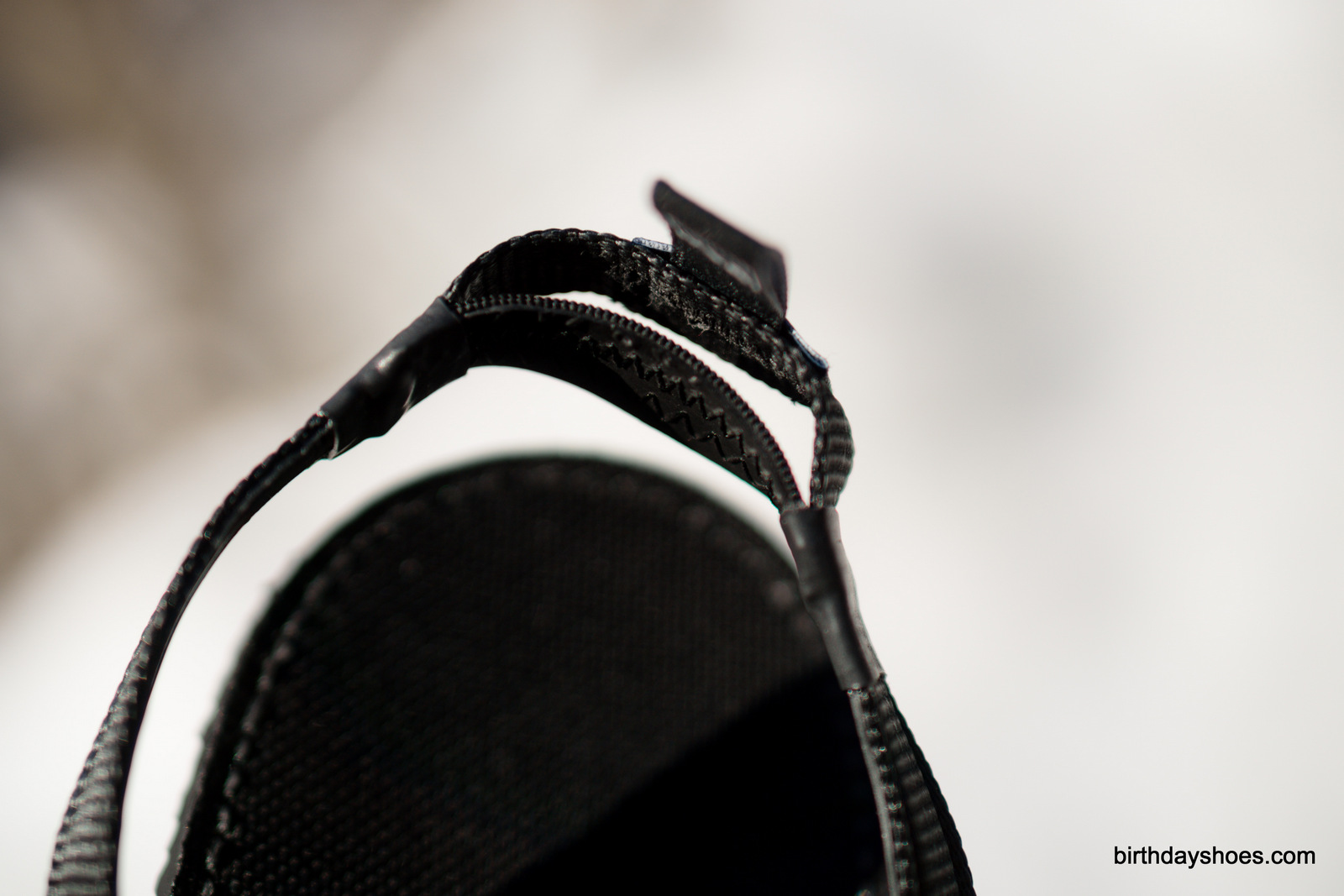
Another welcome addition to the 2.0 models is a double-corded toe post. This double-corded design is very comfortable and distributes the forces between the big and index toe more evenly than a single toe post design. This post is, as is the case with most modern huaraches, countersunk into the sole of the sandal to keep things flat and enhances durability.
Summary
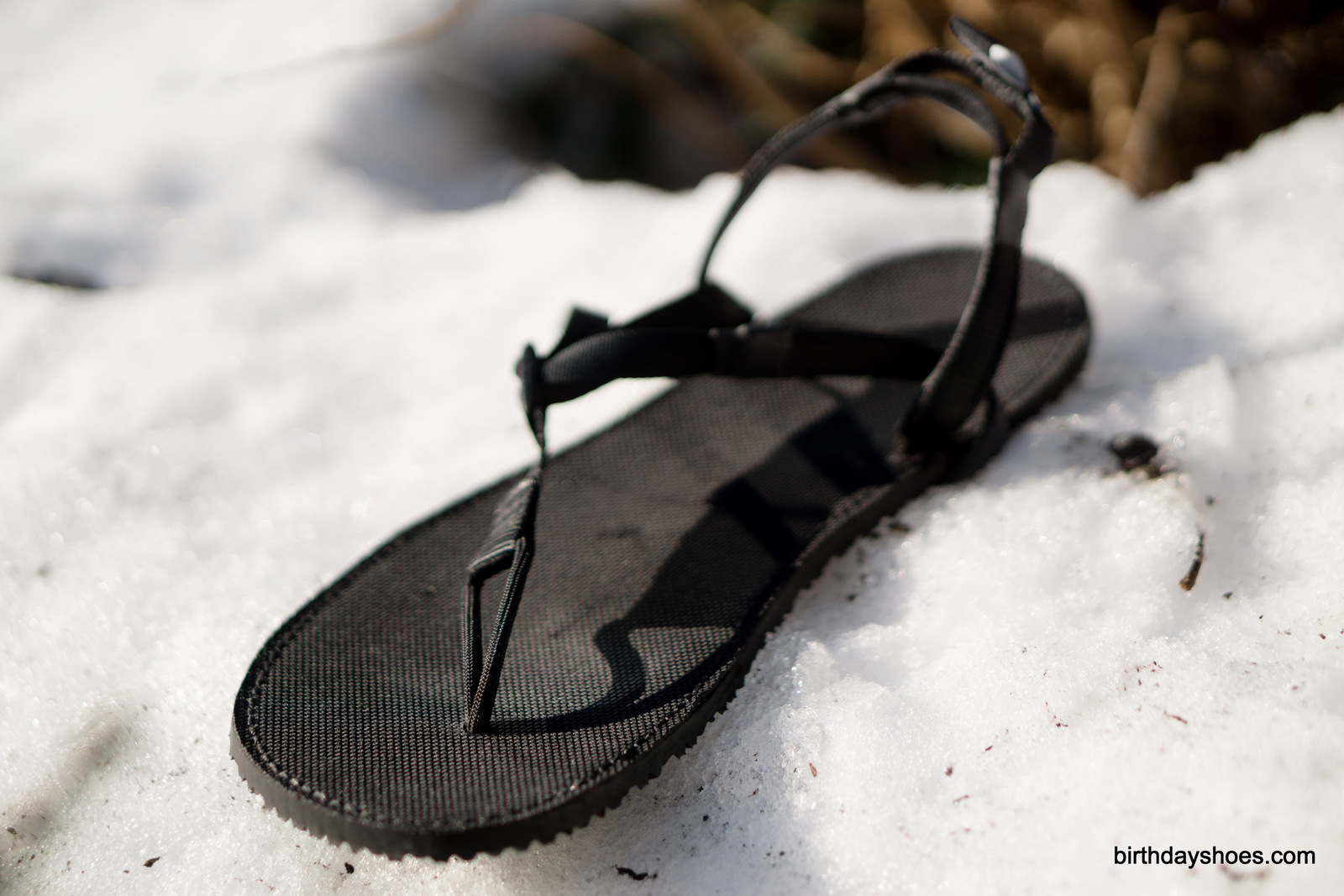
The Earthquake 2.0 from Bedrock Sandals is a good update to an excellent line of running sandals. The lightweight and versatile Gumlite sole provides plenty of traction and ground feel, the new double toepost is comfortable, and the straps are high adjustable.
It’s an excellent choice for hiking, backpacking, and experienced runners. However, please be mindful of your sizing and foot shape and the texture of the ballistic footbed. If you are tackling rougher terrain or have been working on your running form, the footbed may not be an issue for you.
Overall, an excellent update from the constantly-innovating Bedrock Sandals. Easily their best product to date.
A huge thanks goes to Bedrock Sandals for sending me the Earthquake 2.0 for review!


